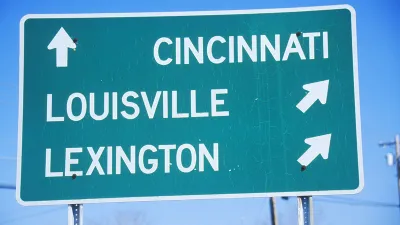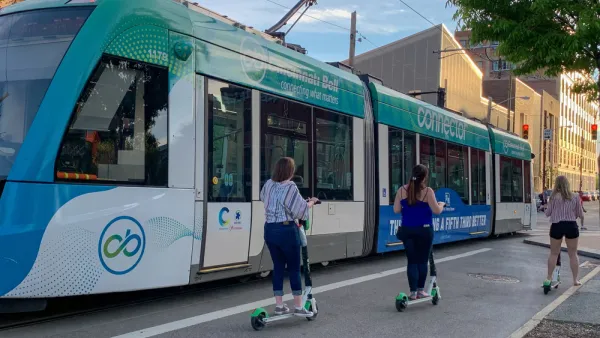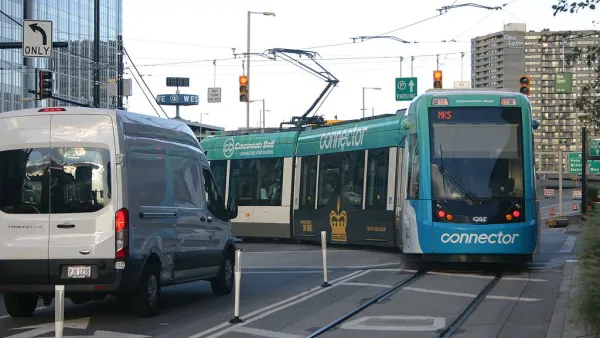A writer examines what it's like to live in the suburbs and work in the city of Cincinnati—to "exist in the physical and social margins" yet still play an active role in shaping the city's identity.

"I fancy myself a type of hipster homesteader," says Jenny Ustick in introducing a longread on the many dynamics of living in the suburbs of eastern Cincinnati.
A few highlights, by way of introducing this compelling article that describes changing times in Cincinnati:
"On a recent drive home, as warmth from my car’s engine was finally reaching my toes and I was putting distance between myself and the city, I realized that there is something similar about us commuters and the way the heat in my car works: convection. We move fluidly (and sometimes not so fluidly) in and out of the city limits, from neighborhood to neighborhood, through cuts in the rolling hills and in all the cardinal directions. It is a cycle, an exchange of capital, of information, and ideas. We leave our contributions, and we get things in return. And it’s not just true of me and my job and my automobile, but the history of the city and the people who have built its character."
"We do ourselves a disservice by tying assumptions about one’s philosophy, allegiance, or usefulness to proximity. I don’t have to live in the city proper, or want to, in order to do good work in the city. You don’t have to live in the suburbs. You don’t have to want to live in the suburbs. Neither of us should hold that against one another. In fact, you might be surprised at how much we have in common."
The article also includes analysis of the Cincinnati streetcar controversy, gentrification, and climate change.
FULL STORY: Neither Created Nor Destroyed

National Parks Layoffs Will Cause Communities to Lose Billions
Thousands of essential park workers were laid off this week, just before the busy spring break season.

Retro-silient?: America’s First “Eco-burb,” The Woodlands Turns 50
A master-planned community north of Houston offers lessons on green infrastructure and resilient design, but falls short of its founder’s lofty affordability and walkability goals.

Delivering for America Plan Will Downgrade Mail Service in at Least 49.5 Percent of Zip Codes
Republican and Democrat lawmakers criticize the plan for its disproportionate negative impact on rural communities.

Test News Post 1
This is a summary

Test News Headline 46
Test for the image on the front page.

Balancing Bombs and Butterflies: How the National Guard Protects a Rare Species
The National Guard at Fort Indiantown Gap uses GIS technology and land management strategies to balance military training with conservation efforts, ensuring the survival of the rare eastern regal fritillary butterfly.
Urban Design for Planners 1: Software Tools
This six-course series explores essential urban design concepts using open source software and equips planners with the tools they need to participate fully in the urban design process.
Planning for Universal Design
Learn the tools for implementing Universal Design in planning regulations.
EMC Planning Group, Inc.
Planetizen
Planetizen
Mpact (formerly Rail~Volution)
Great Falls Development Authority, Inc.
HUDs Office of Policy Development and Research
NYU Wagner Graduate School of Public Service




























